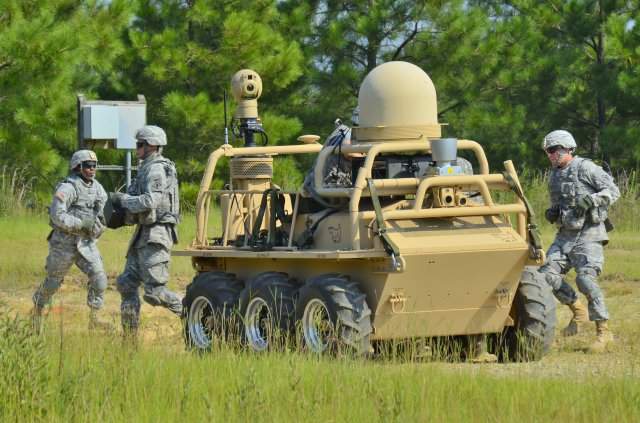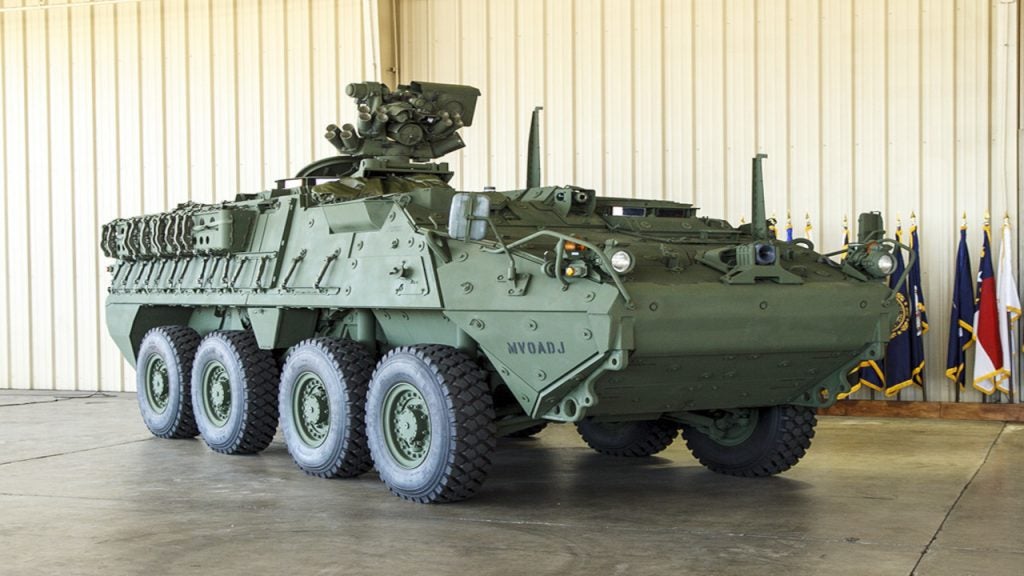
If you haven’t been paying meticulous attention over recent weeks you would be forgiven for thinking US defence, like many other functions of state in the US and around the world, is continuing to face financial challenges. That’s true, or at least it was. Although the US continues to spend more than any other nation on its defence, since the start of the decade that spending has stagnated – arguably a cut in real terms.
However, analysis by the Stockholm International Peace Research Institute’s arms and military expenditure programme recently found constraints were easing, with funding set to rise this year, up from the annual $610bn for the past seven years.
That news chimes with recent comments made by the US Secretary of the Army, Mark Esper. “You fix your roof when it’s sunny out, and right now it appears to be sunny for the next couple of years,” he said, addressing the Heritage Foundation earlier this year.
Esper said the US Army was looking at how it could best find the funding for priority programmes, namely those aimed at modernising the force.
The US Army’s Big Six modernisation programme
The Big Six programme, announced in October 2017, looks to revamp and future-proof armour, artillery, aviation, air and missile defence, networks and soldiers. For vehicles the initiative will begin with the M2 Bradley troop carrier and later include the M1 Abrams tank.
“We’re realising with many of our systems – I’ll stick with the Abraham tank and Bradley fighting vehicles – that as these systems age our ability to integrate key enabling technologies and new capabilities is becoming diminished over time,” says Colonel Gerald (Andy) Boston.
How well do you really know your competitors?
Access the most comprehensive Company Profiles on the market, powered by GlobalData. Save hours of research. Gain competitive edge.

Thank you!
Your download email will arrive shortly
Not ready to buy yet? Download a free sample
We are confident about the unique quality of our Company Profiles. However, we want you to make the most beneficial decision for your business, so we offer a free sample that you can download by submitting the below form
By GlobalDataBoston is stationed in Fort Benning, Georgia, and is the deputy director for the next generation combat vehicle (NGCV) cross functional team, one of eight teams working on the Big Six programme. The team was established in October 2017 to facilitate the integration of requirements and analysis to inform acquisitions and improve the speed of fielding, specifically for combat vehicle formations.
“The NGCV team functions as the army’s lead coordinating, integrating and synchronising body to recommend concepts, requirements, plans and programmes pertaining to the development of next generation combat vehicles to army leadership,” Boston explains.
Part of the need to upgrade the current fighting fleet, he says, is reducing engineering margins which mean the force is now coming to complete optimisation of the older vehicles.
“We’re running out of engineering room on those systems and we need to look at what comes next so that we can make those upgrades in the future,” he says, highlighting size, weight, architecture, power and cooling as important factors that need to be considered in any future vehicle.
“The character of warfare is changing and that is going to drive how we deliver, operate and sustain future combat capabilities, particularly in the combat vehicle fleet,” Boston adds.
Autonomy will dominate future fighting machines
And it’s the future and possibilities it might bring that has got the senior echelons of the US Army excited. Speaking about a ride on a robotic vehicle, Esper told the Atlantic Council that autonomy is a key technology, critical to the future fleet of fighting vehicles.
However, he acknowledged the challenges the army faces in development, suggesting commercial partners would be crucial. “Unlike the commercial sector, we have to develop systems that can manoeuvre off-road, that can manoeuvre in all elements…. that can navigate obstacles, whether they be trees or gullies or rocks or whatever they may be,” Esper said.
“The hypothesis that we’re working on is that we are going to be able to, in the future, deliver decisively on the battlefield using robotic combat vehicles,” Bolton tells us. “We have a way to go on that, we believe it is the future but we can’t visualise the future unless we get started now. The good news is robotic combat vehicles and man fighting vehicles are being developed simultaneously, but they are not interdependent or co-dependent.”
Artificial intelligence is a question of when, not if
Although warning against immediate expectations, Bolton says autonomy and artificial intelligence (AI) have a “big role to play” in the future, adding that the army has already asked commercial partners to work towards vehicles with the capability to be remotely manned “right out of the box”, including the Bradley.
“We define that as a man fighting vehicle that primarily operates with a crew but does have the ability to conduct remotely controlled operations while the crew is off platform,” Bolton explains. “These could be executed from someone in a dismounted position or from another vehicle. We’d like it to be remote controlled using non-physical tethers, off-platform control through sensors, driving technology, fire control, imagery, data transfer and so forth. So yes, we are very much looking to the Bradly replacement to have an optionally-manned component to it right up front.”
However, with a comment that should settle the nerves of some less enthusiastic readers, he cautions against the over-use of AI, saying it should be used in very discreet ways, based on the functions the vehicle is performing.
“Let’s take the shot function,” he says. “You would probably want to use some level of AI and autonomy to help speed up your target acquisition and target identification. But when you go to deciding whether or not to apply lethal effect on that target you would want very low, almost no levels of autonomy or AI because that’s the human making that decision… that applying lethal affect is the right and reasonable thing to do. It can be very useful in speeding us up and making us more effective but the human has to be the one to make the decision; is that target hostile, is it the correct target?”
When will we see deployment?
It’s clear that fighting machines of the future will be quite different to those of yesteryear, but how different remains to be seen. Bolton says the Bradley, expected to be ready for deployment after 2026, will continue to carry personnel and ultimately be controlled by a professional soldier.
The question is, how much of that control will be assisted in ways we’ve not before seen and how many lives might that save?
An unusual statement given the subject, but if autonomy can mean reduced risk for soldiers and better target selection to name just a few of its benefits, that can only be a good thing, can’t it?







